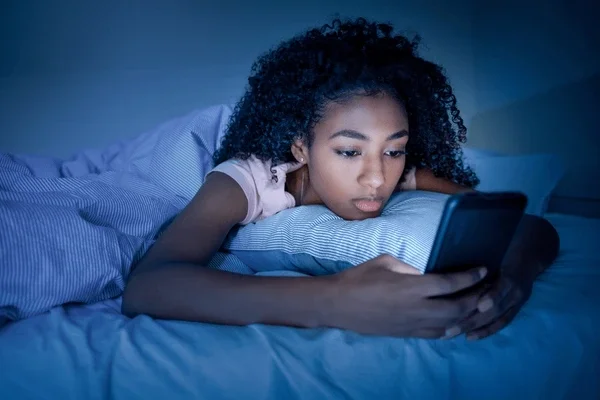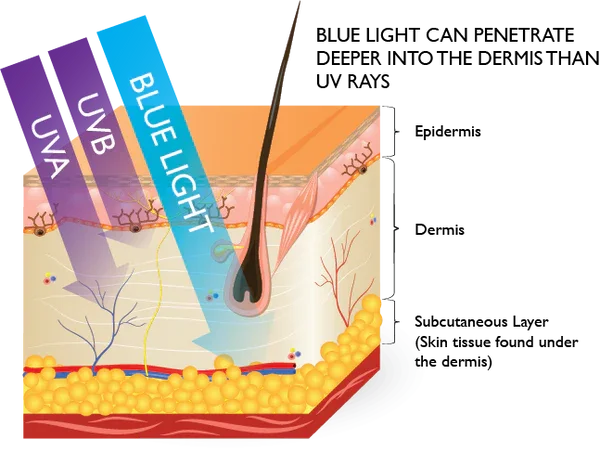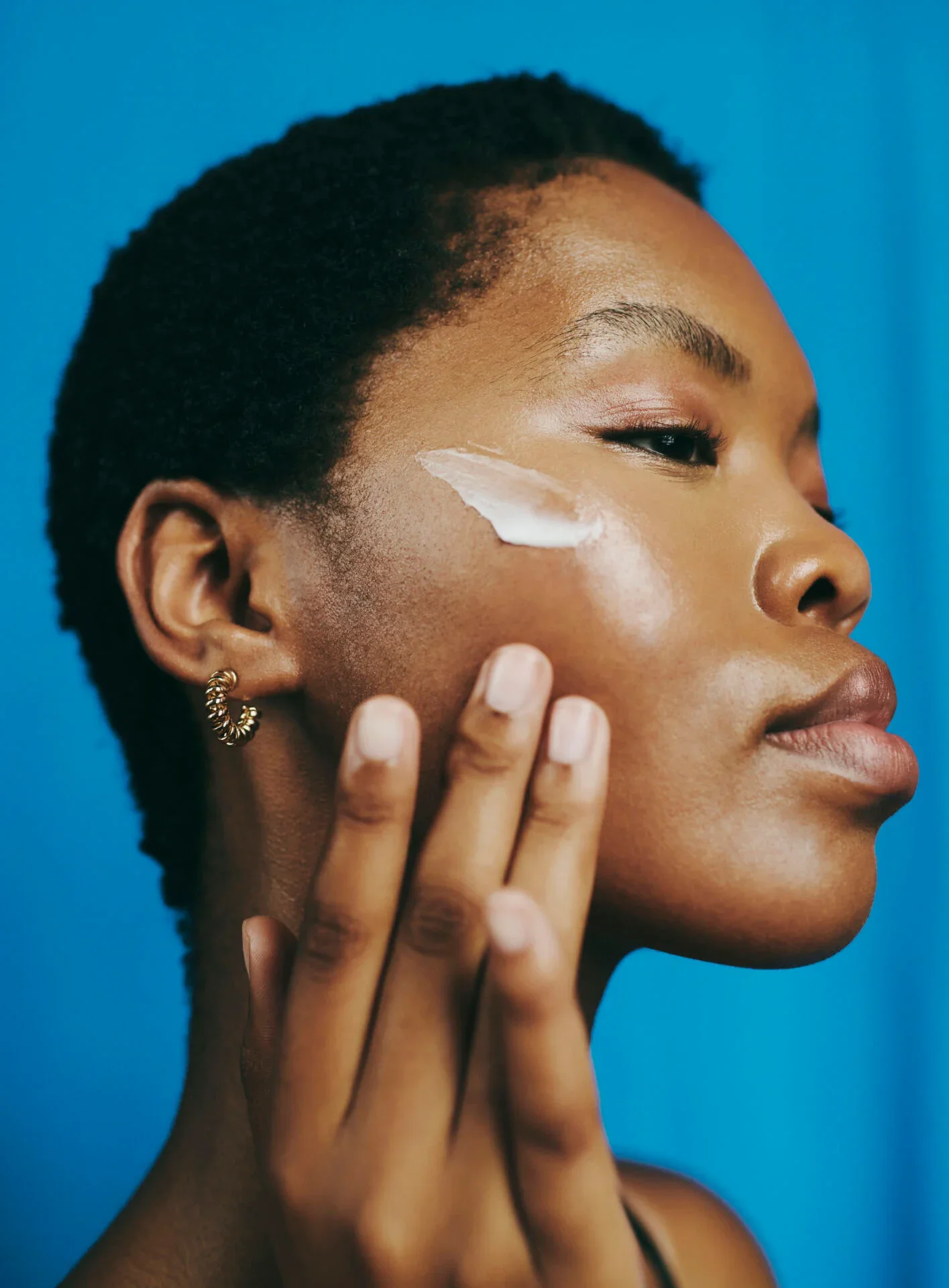Blue Light, Dark Truth: Why Your Devices Might Be Diming Your Skin’s Brightness
We’ve all heard the age-old warnings about sun damage — SPF, wide-brimmed hats, and the desperate dash to shade at 12:01 PM. But here’s the plot twist: your phone, laptop, and tablet may be quietly turning your skincare routine into a round of Whac-a-Mole. The culprit? High-energy visible (HEV) light — better known as blue light — and its sneaky potential to darken your skin.
Blue Light 101
Blue light is part of the visible light spectrum, with wavelengths between roughly 400–500 nanometers. You meet it naturally through sunlight, but in our 21st-century glow-up, it’s also pouring out of LED screens like a digital waterfall.
And no, it’s not just your eyes that feel it — research suggests blue light can penetrate deeper into the skin than UVB rays and may cause pigmentation changes (Liebel et al., 2012, Journal of Investigative Dermatology).
The Science of Screen-Induced Skin Shade
Here’s where it gets interesting (and slightly alarming):
A 2010 study by Mahmoud et al. found that exposure to blue light in people with darker skin tones (Fitzpatrick types III–VI) led to more lasting hyperpigmentation compared to exposure to UVA rays. That means those Netflix binges or 10-hour work marathons could be subtly boosting melanin production — not in the sun-kissed beach way, but in the “why is my skin looking patchy?” way.
Blue light exposure may also generate reactive oxygen species (ROS) — free radicals that damage skin cells and speed up aging (Pang & et al., 2020, Oxidative Medicine and Cellular Longevity). Think of it as oxidative stress with a Wi-Fi connection.
Your Phone Isn’t the New Sun… But
Let’s be clear: your iPhone won’t turn you into a leather handbag overnight. The doses from screens are lower than sunlight. But if you’re clocking 6–10 hours of screen time daily (which most of us are — Statista, 2023), that constant low-dose exposure might add up over months and years.
Dermatologists now suspect that screen light could be an under-recognized factor in hyperpigmentation — especially melasma, post-inflammatory dark spots, and general uneven tone.
How to Outsmart the Glow
If the thought of your phone making you spotty is making you twitch, breathe. Here’s how to play defense without tossing your laptop into the sea:
SPF is Still Your BFF Not all sunscreens protect against blue light, but tinted mineral sunscreens containing iron oxides can help block visible light (Duteil et al., 2014, Pigment Cell & Melanoma Research).
Antioxidants Are Your Backup Squad Serums with vitamin C, niacinamide, and resveratrol can neutralize ROS before they party in your skin cells.
Night Mode Is Your Friend Blue-light filters on devices reduce HEV intensity. It’s not a cure-all, but it’s like dimming the lights on a stage — less spotlight on your skin.
Skin-Friendly Breaks Step away from your screen every hour — not just for your posture, but to reduce total exposure.
Be Melanin-Minded If you have a deeper skin tone, be extra proactive — studies suggest you’re more likely to develop hyperpigmentation from visible light.
Bottom Line
Your phone isn’t evil. But in the same way we learned to respect the sun, maybe it’s time to give our digital light a side-eye too. Screen time may not burn you, but it could slowly shift your skin’s tone — and not in the “golden hour selfie” kind of way.
So yes, by all means binge that series. Just do it with SPF, an antioxidant serum, and the smug satisfaction of someone who knows they’re outsmarting their devices.
References:
Liebel, F., Kaur, S., Ruvolo, E., Kollias, N., & Southall, M. D. (2012). Irradiation of skin with visible light induces reactive oxygen species and matrix-degrading enzymes. Journal of Investigative Dermatology, 132(7), 1901–1907.
Mahmoud, B. H., Hexsel, C. L., Hamzavi, I. H., & Lim, H. W. (2010). Effects of visible light on the skin. Photochemistry and Photobiology, 86(3), 710–713.
Pang, J., et al. (2020). The role of visible light in skin aging. Oxidative Medicine and Cellular Longevity, 2020.
Duteil, L., Cardot-Leccia, N., Queille-Roussel, C., Maubert, Y., Harmelin, Y., Boukari, F., ... & Passeron, T. (2014). Differences in visible light-induced pigmentation according to wavelengths: a clinical and histological study in comparison with UVB exposure. Pigment Cell & Melanoma Research, 27(5), 822–826.
Statista (2023). Average daily time spent on smartphones worldwide from 2019 to 2024.


